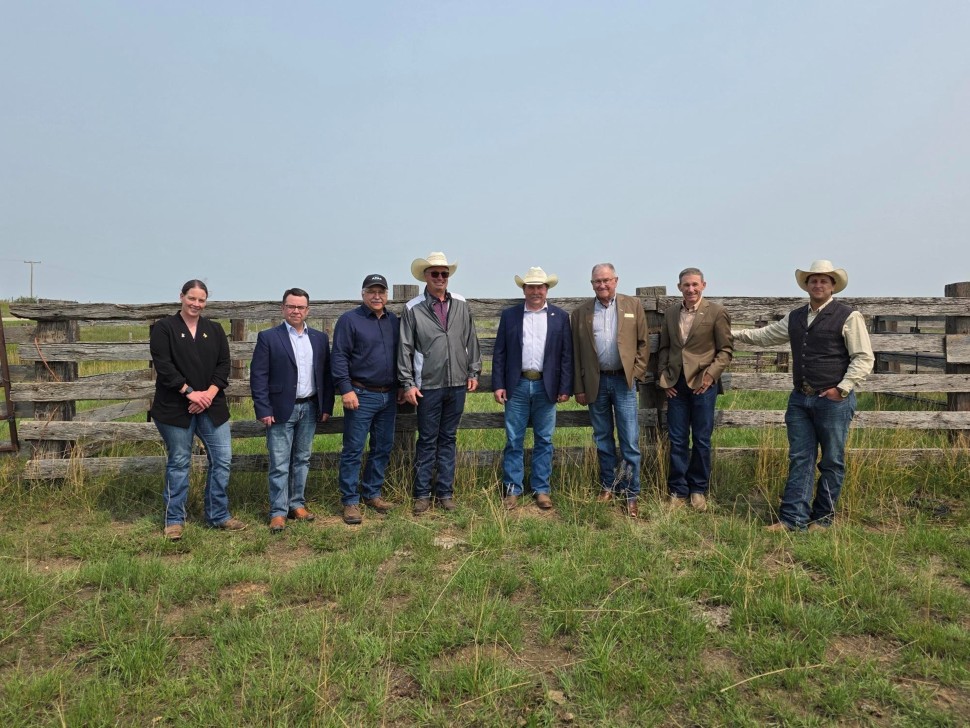Saskatchewan producers will benefit from major enhancements to the AgriStability program for the 2025 program year, aimed at strengthening support amid trade uncertainty and ongoing drought conditions.
Federal, provincial, and territorial agriculture ministers met virtually last week and agreed to increase the compensation rate from 80 per cent to 90 per cent, and doubled the maximum payment cap from $3 million to $6 million per operation.
Saskatchewan Agriculture Minister Daryl Harrison announced the changes yesterday on a farm at Rush Lake.
"Increasing the compensation rate from 80 to 90 percent is probably the biggest impact to producers overall, it shows the times we’re in, and I think that is very well received."
He points out doubling the cap will also help those with large input investments who are at the mercy of Mother Nature.
Harrison also emphasized the importance and timing of the announcement for producers who have been dealing with ongoing dry conditions.
"I met with producers and toured fields in the drier regions. You know what it looks like before you get there, but I completely understand the situation they’re in. We’re here to support the best we can."
The changes were welcomed by industry groups across the province.
Bill Huber, President of the Saskatchewan Association of Rural Municipalities (SARM), says offering producers further coverage, including permanent adjustments to feed inventory pricing for 2026, are all welcome additions to the program.
"Saskatchewan producers are currently facing rising costs, harsh weather conditions causing drought and feed uncertainty. These changes are a good first step in providing support for farming operations at a time when they need it most."
The Saskatchewan Cattle Association (SCA) Chair Chad Ross says the changes should make the program more responsive for livestock producers, including the plans to move forward with the permanent change to the feed inventory pricing for the 2026 program year.
In 2026, AgriStability will permanently adjust feed inventory pricing for livestock producers to better reflect on-farm realities. As well, the province is also advocating to have feed from rented pasture recognized as an eligible expense.
Jeff Yorga, President of the Saskatchewan Stock Growers Association (SSGA), says as we deal with the effects of a decade-long drought, BRM improvements are key to industry sustainability.
He notes that including feed inventory costs and rental costs is a positive first step towards making AgriStability relevant to producers.
Bill Prybylski, President of the Agricultural Producers Association of Saskatchewan (APAS), says the changes reflect long-standing concerns.
"The permanent changes in feed accounting and cost adjustments mean the unique hurdles they face are finally being acknowledged. APAS is thrilled to witness these positive developments and advises all farmers to consider what AgriStability has to offer for protecting their businesses."
Producers are encouraged to assess how the changes may benefit their operations, the deadline to enrol in AgriStability for the 2025 program year is July 31, 2025.
For more information, visit scic.ca or call 1-866-270-8450.
